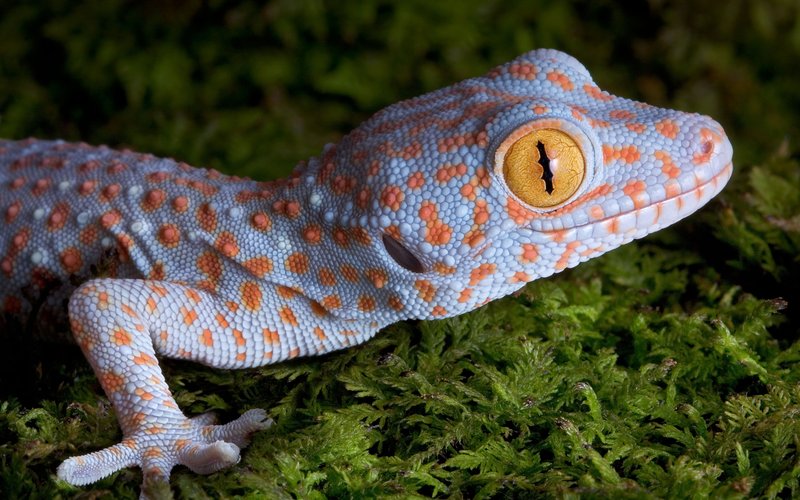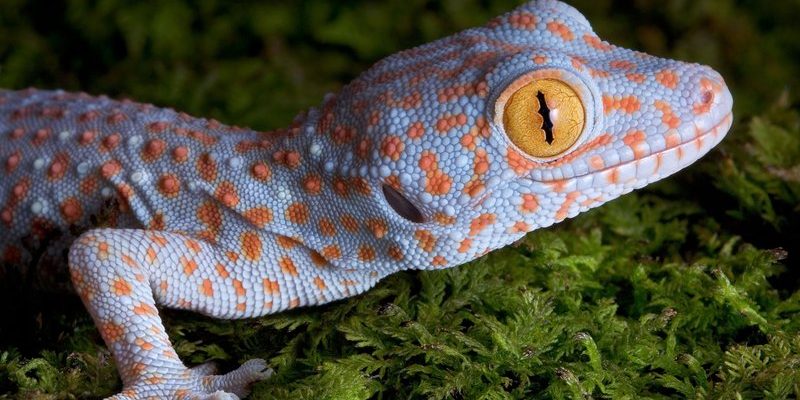
Let’s dive into the fascinating world of geckos and discover the remarkable adaptations that allow these creatures to survive extremes, from desert heat to tropical humidity. It’s a journey that shows just how incredible evolution can be, shaping lives in ways we might not expect.
Understanding Gecko Habitats
Geckos inhabit a variety of environments, each with its own set of challenges. Whether they’re scaling rocky cliffs or hiding in tree canopies, geckos have adapted to thrive in their specific surroundings. In deserts, for instance, they face high temperatures and scarce water. Meanwhile, rainforest geckos deal with humidity and dense vegetation.
One common type, the leopard gecko, is often found in dry, arid regions. This species has developed a keen ability to retain moisture, crucial for surviving in environments where water is hard to come by. Their nocturnal habits mean they come out when the heat of the day has subsided, minimizing their exposure to the sun and the risk of dehydration.
In contrast, the tokay gecko prefers tropical areas, where humidity is high. This species showcases how geckos adapt their behaviors based on their habitat. Tokay geckos are more active during the night, using the cooler temperatures to hunt for food and avoid predators.
Water Conservation Techniques
One of the most impressive survival skills of geckos is their ability to conserve water. In arid habitats, finding water can be a challenge. Geckos have developed several techniques to minimize water loss. For example, their skin has evolved to be less permeable, which helps prevent moisture from escaping.
Additionally, some geckos will absorb water through their skin when it rains. They can often be found perched on rocks or plants during rain events, ready to soak up those precious droplets. This behavior not only keeps them hydrated but also demonstrates their adaptability.
You might be wondering how they manage to stay hydrated when they can’t find water. These lizards have a unique method of obtaining moisture from the food they eat, including insects that contain water. It’s a clever way to ensure they get enough hydration without relying solely on external sources.
Temperature Regulation
Temperature extremes are a reality for geckos, especially those living in deserts. During the day, they can face soaring temperatures that are far too hot for most creatures. To cope, geckos have developed some ingenious methods for regulating their body temperature.
One common strategy is behavioral thermoregulation. This means they adjust their activities based on the temperature. During the hottest parts of the day, many geckos will retreat to cool, shaded areas, often hiding under rocks or within crevices. This behavior allows them to wait out the heat and come out when conditions are more favorable.
Some geckos, like the sandfish skink, even have the ability to burrow into the sand to escape the heat. By digging just below the surface, they find a cooler, more stable environment that’s perfect for resting during the day. This adaptability is a fantastic example of how geckos can thrive despite the challenges of their environments.
Unique Adaptations for Climbing
Have you ever watched a gecko climb up a wall with effortless grace? What you might not realize is that their climbing ability is no accident. Geckos have evolved specialized toe pads that allow them to stick to almost any surface. These pads are covered in tiny hair-like structures called setae, which help them cling to surfaces using microscopic forces.
This incredible adaptation is particularly useful in their natural habitats. By being able to climb trees, rocks, and other vertical surfaces, geckos can escape predators and hunt for food more effectively. It’s like having a built-in set of climbing gear!
Moreover, this climbing prowess is key in finding shelter. Geckos can hide in the nooks and crannies of their environment, protecting themselves from both harsh weather and potential threats. It’s a smart strategy that showcases their evolutionary advantages.
Color Change and Camouflage
Many gecko species have the ability to change their skin color. This isn’t just for show; it’s a survival tactic. By blending in with their surroundings, geckos can avoid detection from both prey and predators. This natural camouflage can be especially helpful in environments where they’re vulnerable to larger animals.
The chameleon gecko, for instance, is known for its striking ability to match the colors of the leaves and bark around it. This remarkable skill means they can remain hidden while they wait for insects to pass by. It’s a bit like playing hide-and-seek, but they often come out as the champions!
In addition to camouflage, some geckos use color change as a way to regulate their body temperature. By darkening their skin in the sun, they can absorb more heat. Conversely, when they need to cool down, they may lighten their color to reflect sunlight. This clever adjustment is just one more reason why geckos are so fascinating.
Feeding and Hunting Strategies
Let’s talk food. Geckos are insectivores, meaning their diet primarily consists of insects. But finding food in harsh environments can be tricky. So, how do they manage to snag a meal?
Geckos are patient hunters. They often sit still and wait for insects to come close. Their exceptional night vision allows them to spot prey in low-light conditions, making them effective nocturnal hunters. You might say they’ve mastered the art of stealth!
Some geckos have even developed strategies for hunting in groups, which can increase their chances of a successful catch. Others can leap significant distances to snag flying insects mid-air. Imagine a little ninja, silently waiting before springing into action!
In summary, geckos are remarkable creatures that have developed a suite of adaptations to survive in their harsh environments. From their unique water conservation techniques to their climbing abilities and camouflage skills, these lizards showcase the beauty of nature’s ingenuity.
So the next time you see a gecko, take a moment to appreciate how it has thrived where many others might struggle. It’s a testament to resilience and adaptability, reminding us that even in the harshest conditions, life finds a way.

